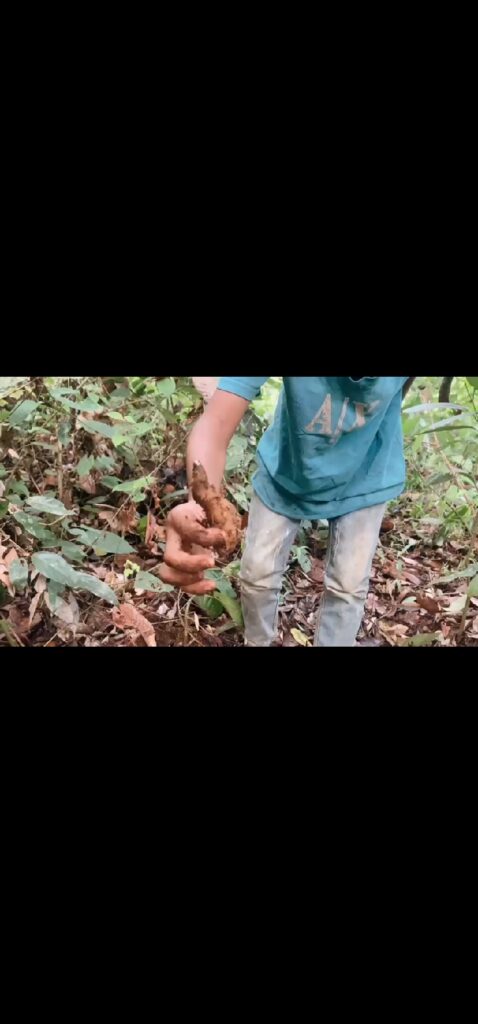Field assistants are also humans, who are sometimes faced with boredom with routines so they need to independently improvise to refresh their spirits and minds. The methods are of course very varied, starting from inviting children to bathe in the river, fishing, looking for fruit behind the oath, joining SAD residents in hunting, playing traditional games and sports together, looking for fruit or tubers typical of local SAD food. These are some of the activities that I (Arif, Faslap Rombong Juray Pematang Jurumat, Sarolangun Regency) often do.
That day, I and several SAD children went to the forest to look for bana. Bana is a type of tuber that can only be found in thickets in the jungle. Stories of old people before, before they knew about rice; Apart from consuming fruit and meat from hunted animals, the SAD community consumes bana as a source of carbohydrates. According to them, looking for Bana does not require using special tools, just using a machete, as a tool for digging the ground. Because of the location of the tubers, they are usually not buried deep in the soil. SAD residents mark the presence of bana, by paying attention to the type of leaves that creep along the surface. Usually bana grows in loose soil, and in dense bushes.
The journey to find Bana today is quite challenging. For approximately 2 hours, I, Juari and Duya (SAD children) walked to the remaining forest closest to the residential location. Uniquely, it was quite difficult for me to find Bana, but not Juari and Duya. The children were quickly able to mark the type of plant and immediately dug into the ground to get bananas. Not all of the bananas obtained are large, so excavation is usually not continued if the bananas held are small. Sometimes it takes a long time to dig for bananas and they often don't find them. The existence of bana is increasingly rare. Maybe because forests are also increasingly disappearing, replaced by oil palm plantations which do not allow the trees to grow well under their stands.
In fact, for me, this trip was not just to fulfill my curiosity about bana, or relieve boredom from routine in the field. But a day with Juari and Duya grew my admiration for SAD children who don't focus on smartphones or TV at home, but at a young age are actually required to help their parents earn a living. These children have a lot of knowledge about wild plants, with local names that I had never read or known before. The way they survive is very interesting. This trip also made our relationship closer, not only did we chat but we also laughed and sang to get rid of our tiredness.
The trip to look for bananas that day was actually not very profitable, because every time they dug; The bana tubers found were all almost small. “If we enter the dense, real forest again; I'm sure there are still lots of them there and they're big, bro!" Duya said. But what is clear is that the trip definitely requires me to prepare overnight provisions, more complete equipment and quite a long time. But I was quite satisfied, even though it was difficult, in the end I was able to see the legendary local food banana which is now starting to disappear and is no longer widely consumed by SAD residents.
By Arief (Faslap Pematang Jumat- Sarolangun)


